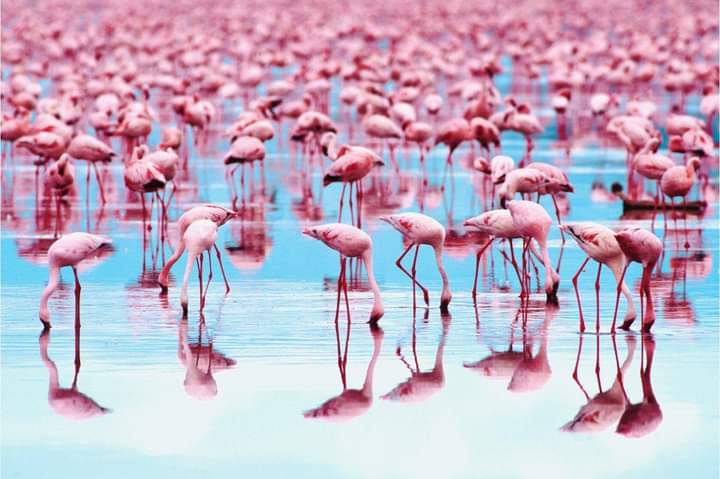
African Flamingos do not have a breeding season, but breed when it rains as that helps them get supplies — like sticks, stones, mud and feathers to build a nest, and there is a greater food supply. So, they are unlikely to breed during droughts. Another interesting reason is that, like lionesses in a pride, a colony chooses to breed at the same time.
Humans continue to be a threat to flamingos — more than any other predator. When you see an attractive flamingo colony, please try to not get close as our closeness can stop them from reproducing.
African Flamingos eat vegetation — like algae and also invertebrates — like small larvae like brine shrimp and insects.
The lesser flamingo is the one we mostly see in Africa. This African flamingo has a bigger bill and eats algae and other tiny, microscopic organisms.
The greater flamingo eats larger things, like insects and small fish.
They get their lovely red or pink colour from a pigment found in their food — ‘Carotenoid pigment’.
Difference between lesser and Greater African Flamingos
Greater flamingos have light pink beaks with a dark tip. Lesser flamingos are more pink in colour and their legs are sorter. Their beaks are a dark red with black tip .
Greater flamingos mainly eat organisms found in the mud of the lagoon at Walvis Bay. The flamingos perform a dance when it’s meal time, this is done to loosen the mud. At low tide the holes made by the grazing flamingos can be seen all over the pan.
Lesser flamingos have different eating patterns. Their main diet is microscopic algae that floats in the water. For this reason lesser flamingos can be seen grazing between 13 to 24 hours in a day. The algae also contributes to the pink plumage of the lesser flamingo. They too can survive to be as old as 40 years old in the wild.
African Flamingos are filter-feeders. They dip their beak into water and filters out the water to eat cyanobacterium ‘ Spirulina’. Spirulina, is a living thing — an organism that is rich in vitamins, minerals and proteins. They are responsible for colouring the water blue-green, but also give flamingos their beautiful pink colour.

